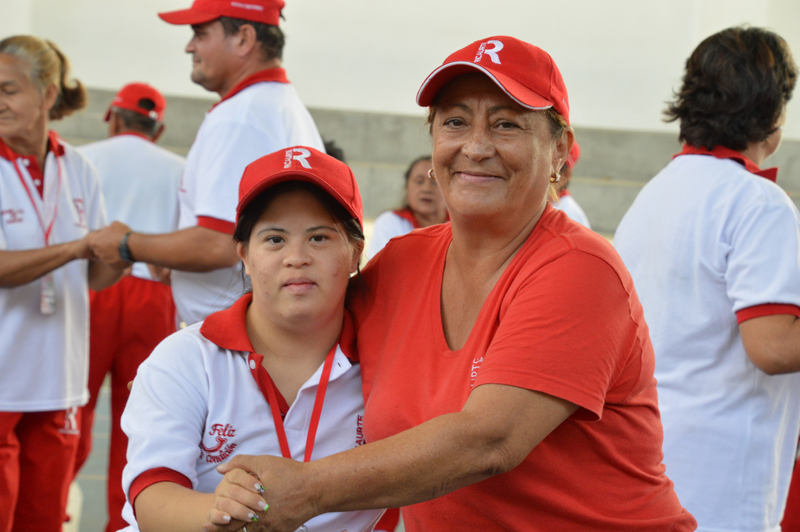Diagnosed with Autism Spectrum Disorder… Now What?
 Raising (and serving) an individual with autism spectrum disorder (ASD) is not the same today as it was 10 or 20 years ago. Today, there are many more interventions and treatments available, there are more professionals who are informed about working with individuals with ASD, and there are many more options for assisting individuals and families to reach potential. Specialized professionals and services are available to help individuals and families and it is sometimes easier to identify appropriate services once a diagnosis is received. Services are available through a variety of mechanisms including First Steps (if the individual is under 3), the local school system (if the individual is over 3), and the Medicaid Waivers. Before receiving a diagnosis, time likely was focused on understanding the individual’s behavior, progression and/or interactions. Once a diagnosis is received, energies can be more easily focused on the process of accessing resources and services that will assist in supporting the individual and family in reaching full potential.
Raising (and serving) an individual with autism spectrum disorder (ASD) is not the same today as it was 10 or 20 years ago. Today, there are many more interventions and treatments available, there are more professionals who are informed about working with individuals with ASD, and there are many more options for assisting individuals and families to reach potential. Specialized professionals and services are available to help individuals and families and it is sometimes easier to identify appropriate services once a diagnosis is received. Services are available through a variety of mechanisms including First Steps (if the individual is under 3), the local school system (if the individual is over 3), and the Medicaid Waivers. Before receiving a diagnosis, time likely was focused on understanding the individual’s behavior, progression and/or interactions. Once a diagnosis is received, energies can be more easily focused on the process of accessing resources and services that will assist in supporting the individual and family in reaching full potential.
The information in this manual is designed to help you in your pursuit to help the individual and/or family. The manual is divided into 7 sections covering the major content areas in which families typically express needing or wanting more information. The manual need not be read in order or cover to cover. Rather, the sections may be referenced in any order and at a pace that works for you.
Initially, you may feel that you need more information about the individual’s diagnosis. There is a wealth of information available about autism spectrum disorder (ASD) and related disabilities; the more you know about the diagnosis the more you can advocate for the individual’s needs both now and in the future. By learning the facts about the diagnosis, you will have a greater capacity to understand how this diagnosis may affect each individual’s education, behavior, and everyday life.
Another area to consider relates to how the diagnosis will affect others in the family. Within the family, each caregiver and family member may react differently to the diagnosis. Differences in reactions are not uncommon. It is important to rely upon one another and allow each other to adjust to the diagnosis in the manner and progression that works best for each person individually and the family unit as a whole. If there are other children within the family, the diagnosis may have an impact on all of them differently. The diagnosis should be discussed and questions answered as honestly as possible. Taking time to do things typically enjoyed as a family is important while also ensuring each child has a few special minutes devoted to them. Extended family will also need to adjust to the diagnosis. Providing information at a pace and in a format (e.g., internet, handouts, books) that are most accessible and acceptable to them will make the most sense.
A third area of consideration occurs with the realization that ”it takes a village” to support individuals and families and no one needs to do it alone. Many sources of support are available. Family and friends will want to help but may need information to know what would help most (e.g., preparing meals, participating in carpools, listening when you need to talk). Other parents who have children with the same diagnosis can be an invaluable resource.
Among various statewide and regional supports, representatives from Autism Society of Indiana (ASI), About Special Kids (ASK), and INSOURCE are available to provide assist to families and other caregivers within communities statewide. Others have walked the road before you; learn from the experiences of others and remember to ask for guidance and help when you need it.
Further, and reflected in the fourth section, is material about the rights and laws in place and designed to protect individuals and families. Support is available through insurance, Medicaid, and other government funding. In addition, the importance of networking and collaborating with professionals in the community, such as school and medical providers is emphasized.
Of course, caregivers are always eager to learn about available interventions and treatments. It is essential to carefully determine each individual’s needs, consider the various treatment options available, and systematically evaluate which treatment or intervention will work best in the context of the individual and their family. Whether the parent or professional, it is essential to remember that parents are experts when it comes to their children and are an essential part of the team. The knowledge and understanding they have of their child will be critical when working with school, medical, and other professionals as programming decisions are made.
Finally, the last section provides information regarding practical strategies that can be applied across the variety of environments and settings that an individual will engage in on a regular basis or will encounter throughout their life’s journey. Awareness of these strategies assists in the ability to advocate and support their use for an individual so that he or she can seamlessly navigate the various settings and demands that may occur. There are many resources and potential partnerships for the family to build with the many professionals who may play a role in the individual’s life. Therefore, it is helpful for the family to organize to be of best help to the individual. It is helpful to create a binder with all evaluations and information to share amongst those involved in caring for the individual. The binder will also allow sharing of the strategies and information that will assist all those involved in programming within their everyday interactions and participation in the individual’s and family’s life.
 Receiving a diagnosis can be overwhelming to the individual and/or their family. It can be challenging to know precisely what to do next given that there is so much to consider and so many potential professionals with whom to be involved. We offer this manual as a way to consider the “Next Steps” and the considerations in making this process a bit easier to navigate. Though the emphasis within the manual is on information for families, individuals with ASD, professionals serving them, and/or others will also find the information and resources to be of practical assistance for themselves and/or to share with others as well.
Receiving a diagnosis can be overwhelming to the individual and/or their family. It can be challenging to know precisely what to do next given that there is so much to consider and so many potential professionals with whom to be involved. We offer this manual as a way to consider the “Next Steps” and the considerations in making this process a bit easier to navigate. Though the emphasis within the manual is on information for families, individuals with ASD, professionals serving them, and/or others will also find the information and resources to be of practical assistance for themselves and/or to share with others as well.
